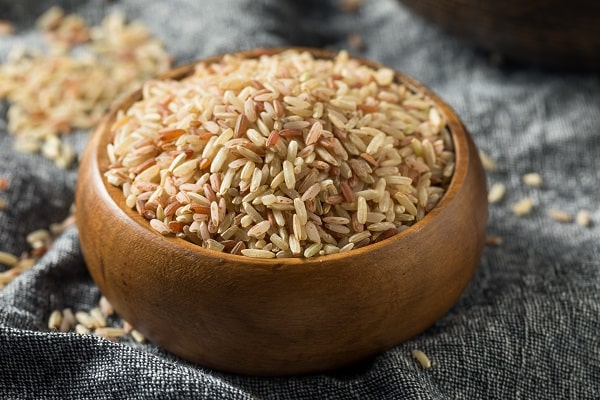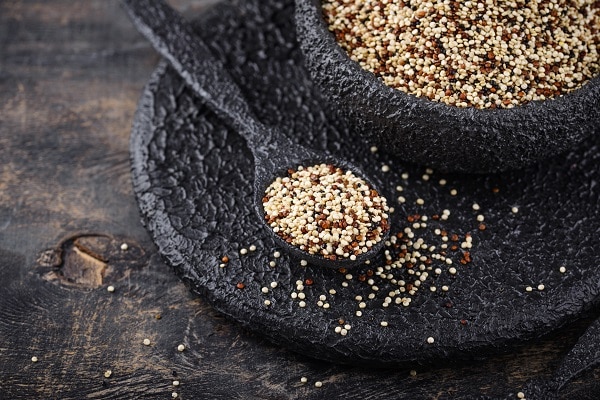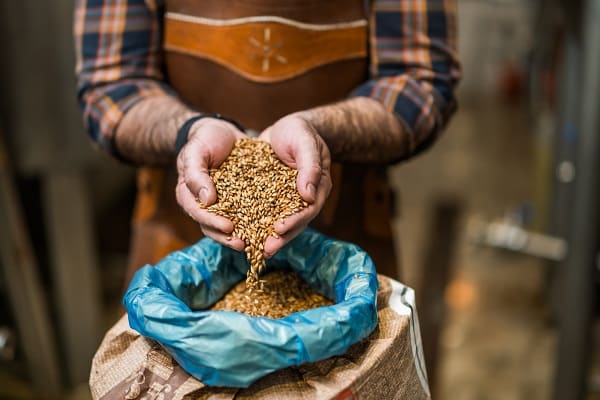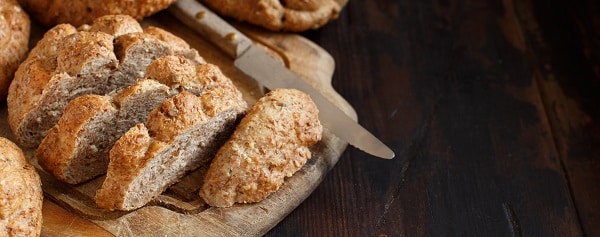The pursuit of a healthy diet can often feel like a challenging quest, especially with the multitude of dietary options available today. However, one nutritional advice that remains constant is the inclusion of whole grains in your diet. Whole grains are unrefined grains that retain all parts of the grain— the bran, germ, and endosperm. They are packed with nutrients such as fiber, protein, vitamins, and minerals, which are essential for overall health and well-being. In this post, you will get a look at seven healthy whole-grain foods that not only boast excellent nutritional profiles but also offer delightful culinary experiences.
Contents
The Importance Of Whole Grains

In recent years, whole grains have become a staple recommendation for a balanced diet, and for good reasons. Whole grains are rich in fiber, an essential nutrient that contributes to a healthy digestive system and aids in maintaining an optimal body weight. Additionally, they provide essential vitamins and minerals like B vitamins, antioxidants, and trace minerals, including iron, zinc, copper, and magnesium.
Whole grains also have a significant role in managing heart health and blood sugar levels. The fiber in whole grains slows down the absorption of sugars into the bloodstream, thereby preventing spikes in blood glucose and insulin levels. This effect can be particularly beneficial for people with diabetes or those at risk. The same high-fiber content contributes to the feeling of fullness, which can help control body weight, a critical aspect of heart health. Now let’s take a look at some of the healthiest whole-grain foods you can add to your diet.
Oats

The first superfood on the list is oats, a familiar and much-loved staple in many breakfast menus worldwide. Oats are rich in a particular type of fiber called beta-glucan, which is known to help lower levels of bad cholesterol. Consuming oats regularly can reduce the risk of heart disease and help maintain healthy blood pressure levels, thanks to its high fiber content.
Incorporating oats into your diet can be as easy as enjoying a warm bowl of oatmeal in the morning. You can also add them to your smoothies for a nutrient boost or use them in baking as a healthy substitute for refined grains. If you are looking for a crunchy snack, homemade granola made from oats can be a delightful and healthy choice.
Brown Rice

Brown rice is another versatile and nutritious whole-grain food that can be easily included in your diet. Unlike white rice, brown rice retains its bran and germ, keeping its complete nutritional profile. It’s rich in fiber and several essential nutrients like magnesium, selenium, and vitamin B6, contributing to heart health, a robust immune system, and overall wellness.
Brown rice can serve as an excellent side dish to a variety of meals. You can use it as a base for stir-fries, incorporate it into soups, or use it in salads for an extra crunch and nutritional boost. Moreover, brown rice can be a healthier substitute for white rice in any dish, from sushi to burritos, making it a versatile grain to have in your pantry.
Quinoa

Quinoa is a nutritional powerhouse increasingly recognized for its high protein content, making it particularly valuable in vegetarian and vegan diets. This whole grain is one of the few plant foods that provide all nine essential amino acids, making it a complete protein source. Besides, quinoa is rich in fiber, magnesium, B vitamins, iron, potassium, and various beneficial antioxidants.
Including quinoa in your meals can be a breeze. It can be cooked like rice, making it an excellent base for various dishes such as salads, stir-fries, and casseroles. Quinoa can also be a healthy addition to breakfast bowls, combined with fruits, nuts, and a drizzle of honey for a nutritious start to your day. For a snack, consider quinoa energy bars, a perfect on-the-go treat that can keep your energy levels up.
Barley

Barley, one of the oldest consumed grains in the world, is a nutritious whole grain that offers a variety of health benefits. It is primarily known for its high fiber content, including a unique type of fiber called beta-glucan. This fiber has been linked to numerous health benefits, such as improving cholesterol levels, promoting gut health, and controlling blood sugar levels.
Incorporating barley into your diet can be simple and tasty. It makes an excellent addition to hearty soups and stews, offering a comforting and filling texture. You can also use barley in salads combined with vegetables, fruits, and protein for a well-rounded meal. If you’re looking for a creative way to include it in your diet, try making barley risotto, a wholesome twist on the classic Italian dish.
Whole Wheat Bread

Whole wheat bread has gained popularity for its nutritious profile and its role in a healthy diet. Unlike white bread made from refined grains, whole wheat bread retains all parts of the grain — the bran, germ, and endosperm, giving it higher fiber content and providing essential nutrients like B vitamins and iron.
Whole wheat bread can easily replace white bread in your everyday meals. From sandwiches to toast, the possibilities are endless. You can top it with avocado and a poached egg for a nutritious breakfast or pair it with your favorite soups and salads. Additionally, whole wheat bread crumbs can provide a nutritious crunch to dishes like casseroles and baked vegetables.
Millet

Millet is a versatile, gluten-free whole grain that is often overlooked in Western diets but widely consumed in many other parts of the world. It is rich in fiber and contains several beneficial compounds like antioxidants and phytonutrients. Millet also offers various essential nutrients like magnesium, phosphorus, and B vitamins.
You can use millet in a variety of dishes. It can be served as a side dish, used as a base for salads, or added to soups and stews. Additionally, millet makes a great breakfast cereal when cooked with milk or plant-based alternatives and topped with your favorite fruits and nuts. You could also try using millet flour in baking for a nutritious twist on traditional recipes.
Buckwheat

Despite its name, Buckwheat is not a type of wheat but a pseudocereal related to rhubarb. It’s gluten-free and boasts numerous health benefits, including high protein content and essential amino acids. It’s also packed with fiber and minerals like magnesium, copper, and iron, contributing to heart health and blood sugar control.
Including buckwheat in your diet can be both healthy and delicious. It can be cooked and used as a base for hearty grain bowls or served as a side dish. Buckwheat flour is a fantastic ingredient for gluten-free baking, allowing you to enjoy pancakes, bread, and pastries while keeping your diet balanced and nutritious. Buckwheat can also be toasted and used as a topping for salads, providing a pleasant crunch and a boost of nutrients.
Start Adding These Whole Grain Foods To Your Diet!
Whole grains are nature’s gift, filled with nutrition and offering a plethora of health benefits. As you have explored, these seven whole-grain foods are nutritious, versatile, and delicious. Incorporating them into your daily diet can significantly impact your overall health, supporting weight management, heart health, and stable blood sugar levels. The road to a healthier lifestyle is not a sprint but a marathon, and small changes like including more whole grains in your meals can make the journey not only beneficial but also delightful and enjoyable!


